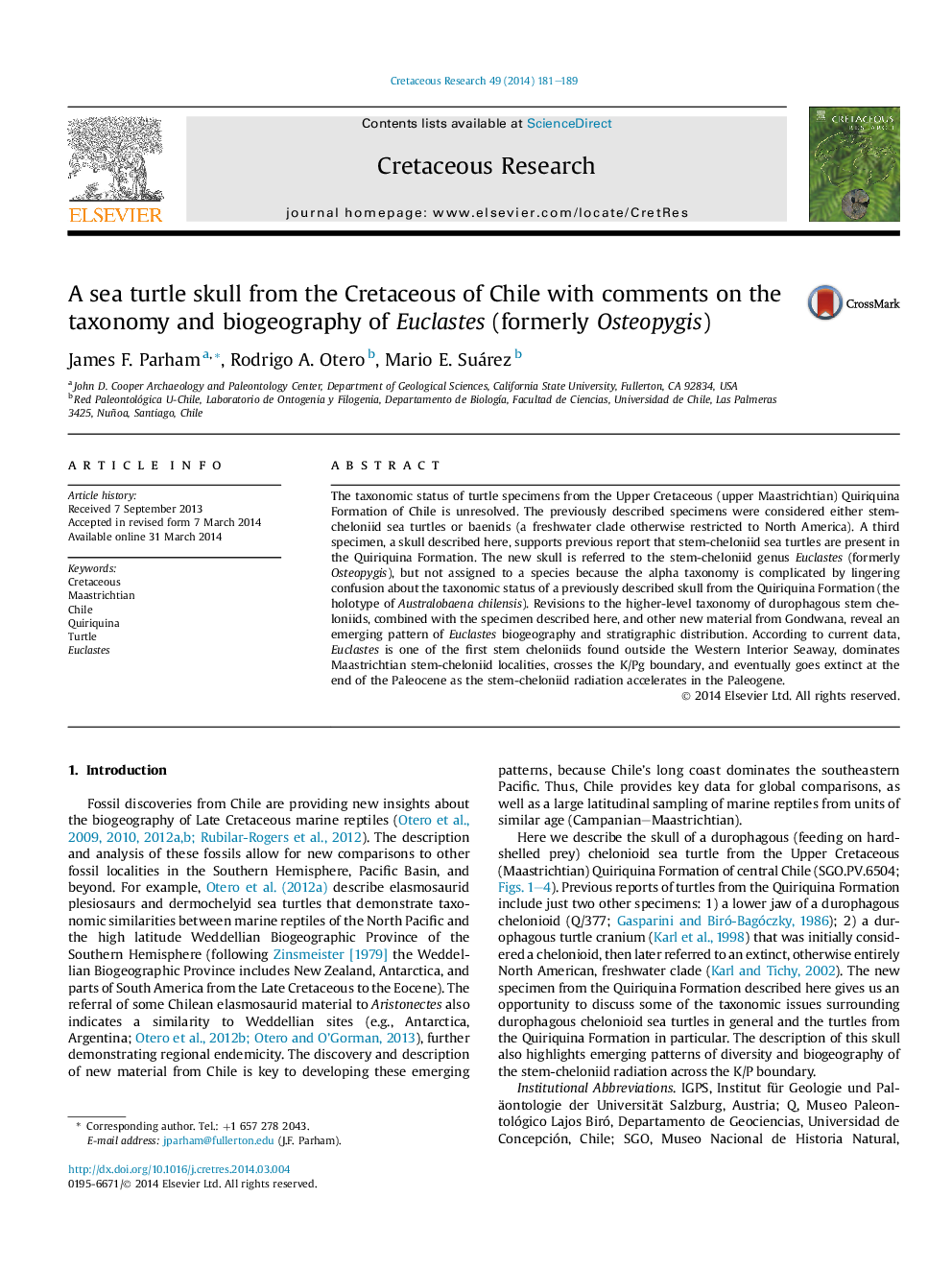| کد مقاله | کد نشریه | سال انتشار | مقاله انگلیسی | نسخه تمام متن |
|---|---|---|---|---|
| 4747007 | 1642073 | 2014 | 9 صفحه PDF | دانلود رایگان |

• A new skull of a sea turtle from the Maastrichtian of Chile is described.
• The new skull is the third known turtle specimen from the Quiriquina formation.
• The new specimen is referred to the stem-cheloniid genus Euclastes.
• The alpha taxonomy is complicated by the uncertain status of Australobaena chilensis.
• Euclastes is widespread in the Maastrichtian and persists into the Paleocene.
The taxonomic status of turtle specimens from the Upper Cretaceous (upper Maastrichtian) Quiriquina Formation of Chile is unresolved. The previously described specimens were considered either stem-cheloniid sea turtles or baenids (a freshwater clade otherwise restricted to North America). A third specimen, a skull described here, supports previous report that stem-cheloniid sea turtles are present in the Quiriquina Formation. The new skull is referred to the stem-cheloniid genus Euclastes (formerly Osteopygis), but not assigned to a species because the alpha taxonomy is complicated by lingering confusion about the taxonomic status of a previously described skull from the Quiriquina Formation (the holotype of Australobaena chilensis). Revisions to the higher-level taxonomy of durophagous stem cheloniids, combined with the specimen described here, and other new material from Gondwana, reveal an emerging pattern of Euclastes biogeography and stratigraphic distribution. According to current data, Euclastes is one of the first stem cheloniids found outside the Western Interior Seaway, dominates Maastrichtian stem-cheloniid localities, crosses the K/Pg boundary, and eventually goes extinct at the end of the Paleocene as the stem-cheloniid radiation accelerates in the Paleogene.
Figure optionsDownload as PowerPoint slide
Journal: Cretaceous Research - Volume 49, May 2014, Pages 181–189